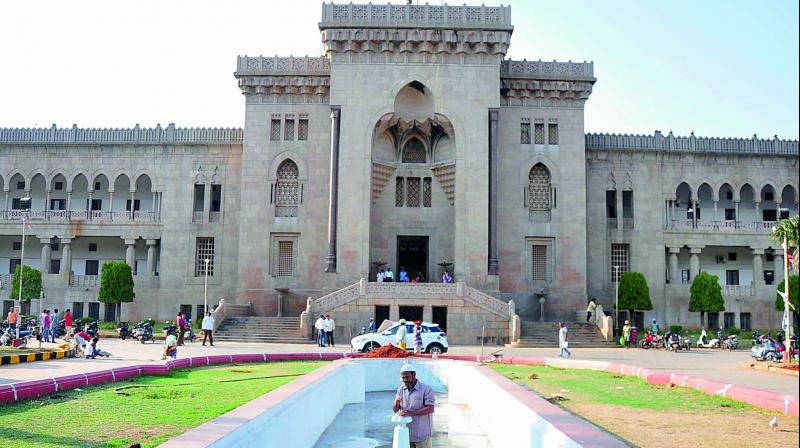Osmania University aimed to blend best of east, west

Hyderabad: From being the first-ever regional language — Urdu — university with select disciplines, the century-old Osmania University grew in four phases since its inception in 1917 after the royal firman issued by its founder Nawab Mir Osman Ali Khan, the seventh Nizam of Hyderabad.
Though the medium of instruction of the University was Urdu, English was compulsory for all students. “One of the basic ideals of Osmania University is to achieve an intellectual synthesis of oriental and occidental learning of the best that has been thought of. Every phase of growth is historical and the university will continue to grow in the centenary year,” says Prof S Ramachandram, vice-chancellor of Osmania University.
The first phase of OU’s growth occurred between 1918 and 1947 and was characterised by Urdu as the medium of instruction in all branches of higher education, including medicine and engineering.
The chemistry, civil engineering, English, history, mathematics, and physics departments were started during this period. The first 30 years saw initiation of new disciplines such as sociology, geography, zoology, botany, geology, education, law, engineering, medicine, agriculture and veterinary science.
During the second phase, from 1948 to 1968, the university celebrated its Golden Jubilee. The year 1948 was historic because the princely state of Hyderabad merged with the Indian Union and Urdu was replaced by English as the medium of instruction.
This led to a huge rise in student in-take. Infrastructure development got high priority, several buildings came up, including the library, and new courses were introduced. The university permitted affiliated colleges under private management.
By 1967, there were 45,000 students studying in 48 constituent and affiliated colleges. The third phase (1969 to 1993) was the period between the Golden Jubilee (1968) and the Platinum Jubilee (1993). There was a growth in research and development during this phase.
The Regional Centre for Urban and Environmental Studies, Institute of Genetics, Navigational Electronics, Centre for Area Studies, Audio Visual Research Centre, and the English Language Teaching Centre were set up.
In the fourth phase (1994 onwards), the university celebrated its Platinum Jubilee (75 years) and new courses such as computer applications, infrastructure were started. It granted autonomy to campus colleges, started new post-graduate centres in other districts, which later elevated to universities.

